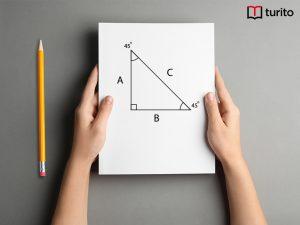Key Concepts
- Temperature
- Units of measurement of temperature
- Absolute zero temperature
- Differentiation between heat and temperature
Introduction:
We come across the word temperature a lot in our daily lives. For example, we measure the temperature of a person; if he/she is suffering from fever, of various substances in the lab, and various other things. In this session, we will be looking at this term and exploring it further to know the way it depends upon the particles that constitutes a body.
Explanation:
Temperature and Kinetic Energy:
The temperature of a body is a measure of how hot or cold a body is. All materials are made up of tiny particles (atoms, molecules). The particles of liquids and gases are always in random motion. However, the particles of solids do not move as much. They vibrate at their own places. Moving bodies possess
- Speed and
- Kinetic energy
The particles of a substance move at different speeds. Hence, they possess different kinetic energies.
Therefore, the temperature of a substance depends directly on the average kinetic energy of its constituent particles.
Temperature α Average kinetic energy of the particles,i.e.,
T α Avg. K.E
When a hot body is kept in contact with a cold body, after some time, the hot body becomes less hot, and the cold body becomes less cold. This is because of the flow of heat from the hot body to the cold body. The body which imparts heat is said to be at a higher temperature than that of the body which receives heat. Thus, the temperature determines the direction of heat flow.

Microscopic view:
When a solid body receives heat energy, its particles start vibrating more vigorously, provided its state and dimensions remain unchanged. When a liquid or gaseous substance receives heat energy, its particles start moving at higher speeds, provided their state and the dimensions of the container remains unchanged. In both the cases, the kinetic energy of the constituent particles increases, resulting in an increase in temperature. Thus, temperature of a substance is a quantity which tells the thermal state of a body i.e., the degree of hotness or coldness of a body.


When there is no heat transfer between two bodies in contact, they are said to be at the same temperature. However, this does not mean that they contain the same amount of heat. Temperature along does not determine the amount of heat contained in a body. When an equal amount of heat is supplied to different bodies, their temperature rises by different amounts. The amount of heat energy contained in a body depends upon its mass, temperature and its type of material.
Units of Temperature:
The S I unit of temperature is Kelvin (K). However, it is also commonly measured in the units of degree Celsius (oC) and degree Fahrenheit (oF). These units are interconvertible.
Kelvin and Degree Celsius:
The temperature on kelvin scale and Celsius scale are related as under.
T (K) = 273 + t (oC)
This means that the ice point
0 oC = (273 + 0) K
0 oC = 273 K
And that the steam point
100 oC = (273 + 100) K
100 oC = 373 K
A degree in both Kelvin and Celsius scales is the same.

The Fahrenheit Scale:
The temperature on Fahrenheit scale and Celsius scale are related as under.
Celsius to Fahrenheit:

Fahrenheit to Celsius:

This means that the ice point
0 oC = 32 oF
And that the steam point
100 oC = 212 oF
A degree on Celsius scale is 9/5 degree on Fahrenheit scale.

Absolute Zero Temperature:
The temperature at which the motion of the particles of a medium ceases is called the absolute zero temperature. This happens at 0 K. Thus, the absolute zero temperature is,
0 K = – 273.15 oC = – 459.67 oF

Difference Between Heat and Temperature:

Questions and answers:
- Convert 37 degree Celsius to Kelvin and Fahrenheit.
Answer:
Degree Celsius to Kelvin:
T (K) = 273 + t (oC)
= 273 + 37
T (K) = 310 K
Degree Celsius to Fahrenheit:
Tf = (9/5)Tc + 32
Tf = (9/5)37 + 32
Tf = 66.6 + 32
Tf = 98.6 oF
Summary
1. The temperature of a substance depends directly on the average kinetic energy of its constituent particles.
2. The temperature determines the direction of heat flow.
3. When heat is supplied to a body, the kinetic energy of its particles increases, which results in its increased temperature.
4. The S I unit of temperature is Kelvin (K). However, it is also commonly measured in the units of degree Celsius (°C) and degree Fahrenheit (°F).
T (K) = 273 + t (°C)
Celsius to Fahrenheit:
TF = (9/5Tc) + 32
Fahrenheit to Celsius
Tc = 5/9 (TF — 32)
5. The temperature at which the motion of the particles of a medium ceases is called the absolute zero temperature. This happens at 0 K. Thus, the absolute zero temperature is,
0 K = – 273.15 °C = – 459.67 °F
Related topics
Different Types of Waves and Their Examples
Introduction: We can’t directly observe many waves like light waves and sound waves. The mechanical waves on a rope, waves on the surface of the water, and a slinky are visible to us. So, these mechanical waves can serve as a model to understand the wave phenomenon. Explanation: Types of Waves: Fig:1 Types of waves […]
Read More >>Dispersion of Light and the Formation of Rainbow
Introduction: Visible Light: Visible light from the Sun comes to Earth as white light traveling through space in the form of waves. Visible light contains a mixture of wavelengths that the human eye can detect. Visible light has wavelengths between 0.7 and 0.4 millionths of a meter. The different colors you see are electromagnetic waves […]
Read More >>Force: Balanced and Unbalanced Forces
Introduction: In a tug of war, the one applying more force wins the game. In this session, we will calculate this force that makes one team win and one team lose. We will learn about it in terms of balanced force and unbalanced force. Explanation: Force Force is an external effort that may move a […]
Read More >>Magnets: Uses, Materials, and Their Interactions
Introduction: Nowadays magnets are widely used for many applications. In this session, we will discuss the basics of magnets and their properties, and the way they were and are used. Explanation: Magnets: Magnetic and Non-magnetic Materials: Poles of a Magnet: Fig No. 1.2: Poles of a magnet Compass: Interaction Between Magnets: The north pole of […]
Read More >>Other topics







Comments: